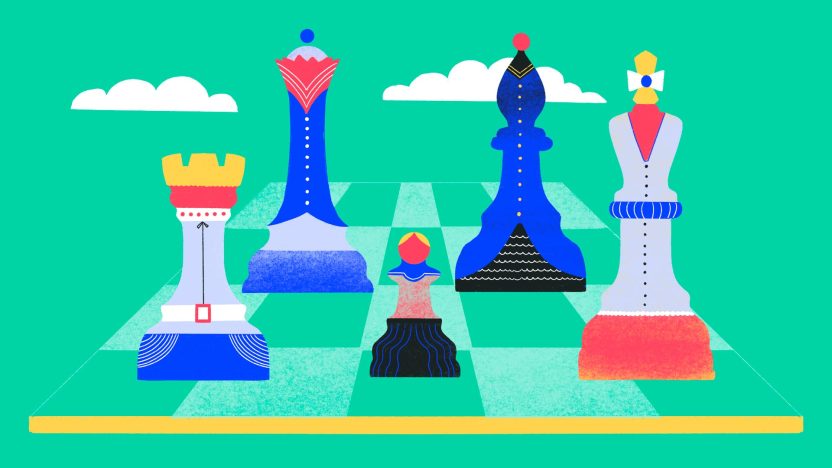
The adoption of Generative Artificial Intelligence (GenAI) in the workplace as a tool for individual support and productivity has been swift: 36% of European workers say they use it.
GenAI tools are not only widespread, but are also perceived as helpful by those who have adopted them. The subjective perception tends to be positive. As people begin to understand how to use them, they seem increasingly confident that they will derive tangible value from them.
These two aspects, adoption, and satisfaction, stand out clearly in our research, both in the ethnographic observation of our archetypes and in the quantitative survey.
However, here lies the paradox. Based on several studies, conversations, and feelings gathered in our daily work in businesses, many continue to doubt the real ability of GenAI to create value in corporate settings. At this early stage of GenAI deployment in the workplace, it seems challenging to translate individual satisfaction into value for the entire organization.

The C-Level dilemma: subjective value vs. organizational value
So, the resulting issue is twofold: on the one hand, individual users find that AI is valuable and improves their job performance; on the other hand, organizations fail to translate these benefits into measurable results.
One possible explanation for this paradox is that, for individuals, GenAI is a realm of experimentation, often unstructured: they try it out and follow the recipe that seems to work best, with an exploratory attitude. This openness is more difficult for organizations as a whole, which tend to look for established guidelines and structured methodologies when adopting a new technological tool. However, the recipe for adopting GenAI at the organizational level does not yet exist; there are no playbooks, and each organization must find its own way, making the process not only difficult, but also costly in terms of time and resources. In other words, organizations cannot buy a cookie-cutter approach to AI integration. They have to build their own.
The hidden value: an army of invisible innovators
Despite the widespread use and benefits of these tools, their value often remains hidden. It’s as if there is an army of “incognito augmented workers” quietly optimizing their work. The value that individuals derive from GenAI remains under the radar and does not automatically translate into a competitive advantage for the entire organization because it remains isolated at the individual level.
Why is this happening? Organizations are trying to mold a potentially “generic” technology that applies to a wide range of use cases without fully understanding how to adapt it to their own processes and goals. This “shaping the water” process requires flexibility and adaptability that must be built into often static and resistant-to-change contexts.

Three approaches to AI integration in organizations
Looking at the most common business experiences, three main patterns of AI integration emerge, which we can depict with the “three bottles.” illustration.”
- The prison: Everything is forbidden, nothing is allowed. This approach, fortunately used by a minority, is found in corporate policies that block any independent experimentation due to security or compliance concerns. People can still find ways to use AI tools, but the value they obtain from them is kept hidden, not shared, and, most importantly, not leveraged by the organization. For example, standardized policies like those proposed by LexisNexis can limit AI experimentation, hindering the recognition of pioneering users’ contributions.
- Wisdom of the Crowd: Decentralized R&D, with free experimentation by individual teams and employees. AI is deployed spontaneously, often without a clear governance framework. The challenge in this context is to find ways to turn individual successes into systematic organizational improvement. The key is to provide access to tools, encourage sharing best practices, and recognize the value of internal innovators.
- The Lab: A dedicated project set up as an innovation lab or internal community focused on supporting decentralized innovation and scaling best practices identified by the crowd. This approach creates a space for organized experimentation where new ideas can be tested without the constraints of traditional corporate structures. The Lab can be a formal hub (such as a center of excellence) or a more flexible structure, but its goal is to catalyze innovation and make it replicable at scale.
What works?
Our analysis suggests that models 2 and 3 (Wisdom of the Crowd and The Lab) are the most effective. However, the real value arises when these two approaches are combined: free experimentation by individuals can generate solutions that The Lab organizes, refines, and deploys at scale. This balance between independent exploration and a systematic, structured approach yields tangible results without stifling creativity.
Strategies for maximizing the value of user innovation
With the “Wisdom of the Crowd” approach, we seem to be looking at a case of user innovation, the phenomenon studied by MIT’s Eric von Hippel, among others (Democratizing Innovation, 2005), in which the end users of a product or service become the protagonists of innovation, developing new ideas, improvements or applications based on their own needs and experiences. Rather than just being passive consumers, these users actively contribute to value creation, often identifying innovative solutions that manufacturers or organizations had not envisioned.
In the business context, this means that employees can use tools such as Generative AI to experiment and develop new practices that optimize their daily work. These innovations come directly from the field and build on knowledge.
User innovation is a bottom-up approach to innovation, where ideas and solutions arise from the grassroots of the organization and can be scaled and disseminated to benefit the entire organization. This approach values the contributions of individuals, fosters internal creativity, and can lead to a significant competitive advantage when user innovation is strategically integrated into business processes. It is an effective approach that we believe can be adopted and strengthened by following certain rules that are not a playbook but elements that shape the use of the technology:
- Reduce perceived risks: Do not demonize GenAI, but spread awareness and promote its responsible use.
- Promote access to tools: Provide visibility and access to experimental AI tools.
- Identify internal pioneers: Identify those who are already using AI to improve their work.
- Celebrate personal success: Recognize and reward those who are adopting AI and improving their performance.
- Encourage sharing: Encourage sharing best practices, through awards and recognition.
- Create career paths: Provide growth opportunities for those who drive AI adoption.
- Address concerns: Manage concerns related to reduced staffing costs and pressures for increased workload.

Strategies for structuring an innovation lab
At the same time, it is advantageous to pursue the “the lab” approach synergistically because any successful internal R&D project is likely to involve both approaches: innovation emerges from the users, and the lab develops and scales it. Research clearly shows that success is greatest when individual experiments are embedded within an organization-wide project. Again, there is no silver bullet yet, but a few guidelines certainly stand out:
- Establish internal benchmarks: Set clear criteria for evaluating AI models on specific tasks.
- Create evocative demos: Show concrete and inspiring examples to help people see the impact of AI.
- Develop prompts and tools: Prototype and rapidly test solutions based on user feedback.
- Build experimental designs: Develop prototypes, even if they are not perfect, to prepare for model development.
Conclusion: The transformation tricycle
We can picture transformation as a tricycle. The three wheels represent technology, business goals and processes, and the people in the organization. Transformation can only occur when these three wheels spin in concert, in the same direction, and at the same speed. Otherwise, the tricycle will not move forward, as the famous “backwards steering bike” experiment demonstrates.
This metaphor is reminiscent of the PPT (People, Processes, Technology) model, proposed by Harold J. Leavitt almost seventy years ago (Applied organizational change in industry: Structural, technological and humanistic approaches, 1965), which emphasizes the importance of balancing these factors in the effective implementation of new technologies.
With GenAI, we are in a phase where technology is advancing rapidly while processes and people are still trying to adapt. No one has a magic formula for how to best integrate artificial intelligence into their company. Even the leaders in the AI field release models without knowing the possible optimal uses.
We are all working together to discover the most effective use cases. Model creators do not know the specifics of your industry, your organization, or your operating environment.
In an environment where no one has a conclusive recipe for AI integration, competitive advantage will depend on your ability to experiment, adapt quickly, and build your own vision before and better than others.
This article is part of our research project


